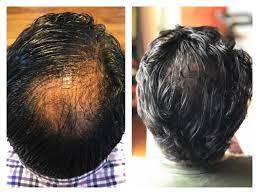Hair Treatment Bangalore

Contact : +919900102030
Hair treatment refers to various procedures and products designed to improve the health, appearance, and manageability of hair. With a multitude of factors affecting hair, including environmental stressors, genetics, and styling practices, effective treatments can address concerns like dryness, damage, thinning, and scalp issues. Here’s an overview of common hair treatments, their benefits, and considerations.
Types of Hair Treatments
-
Deep Conditioning Treatments: These treatments involve applying concentrated conditioners or masks to hydrate and nourish the hair. They are especially beneficial for dry, damaged, or color-treated hair. Ingredients often include oils (like argan or coconut), proteins, and vitamins that penetrate the hair shaft, restoring moisture and elasticity.
-
Hair Oils and Serums: Natural oils (such as jojoba, olive, and castor oil) and commercial serums can help manage frizz, add shine, and provide nourishment. They can be used as leave-in treatments or incorporated into styling routines.
-
Keratin Treatments: These salon-based treatments smooth and straighten hair by infusing it with keratin, a protein that makes up the hair structure. Keratin treatments can reduce frizz and enhance shine but may require regular maintenance.
-
Hair Masks: Similar to deep conditioning, hair masks often target specific issues like damage, dryness, or lack of volume. They typically contain a blend of hydrating and nourishing ingredients and can be left on for an extended period for maximum effect.
-
Scalp Treatments: Addressing scalp health is crucial for overall hair health. Treatments may include exfoliating scrubs, anti-dandruff shampoos, or therapeutic oils to alleviate dryness, irritation, or excessive oiliness.
-
Chemical Treatments: Processes such as coloring, perming, and relaxing chemically alter the hair structure. While they can achieve specific aesthetic results, they may also lead to damage if not done carefully. Professional application and regular conditioning are vital for maintaining hair health after these treatments.
-
Hair Growth Treatments: Products containing minoxidil or finasteride are used to promote hair growth in cases of thinning or baldness. These treatments often require consistent use over several months to see results.
-
Laser Therapy: Low-level laser therapy (LLLT) can stimulate hair follicles and promote hair growth. This non-invasive treatment is gaining popularity for its effectiveness in addressing hair thinning and loss.
Benefits of Hair Treatments
- Improved Hair Health: Regular treatments can enhance moisture, strength, and shine, making hair more resilient to environmental stressors.
- Enhanced Manageability: Treatments can reduce frizz and tangling, making hair easier to style and maintain.
- Aesthetic Appeal: Chemical treatments can help achieve desired looks, such as vibrant color or smoothness, boosting overall confidence.
- Targeted Solutions: Many treatments are formulated to address specific concerns, allowing for personalized care.
Considerations
-
Consultation: It’s essential to consult a professional stylist or dermatologist to determine the best treatments for your hair type and concerns.
-
Patch Testing: For new products, especially those with strong chemicals, a patch test can help prevent adverse reactions.
-
Side Effects: Some treatments may cause side effects, including irritation, dryness, or allergic reactions. It’s important to be aware of these before starting a treatment.
-
Maintenance: Many treatments require ongoing care or follow-up sessions for optimal results.
-
Sun Protection: UV exposure can damage hair, so using products with UV protection or wearing hats in the sun can help maintain treatment effects.
Conclusion
Hair treatment is an essential aspect of hair care that encompasses various procedures and products aimed at enhancing hair health and appearance. By understanding the different options available and consulting with professionals, individuals can tailor their hair care routines to address specific concerns and achieve their desired results. Regular treatments not only improve the look and feel of hair but also contribute to overall confidence and well-being.
